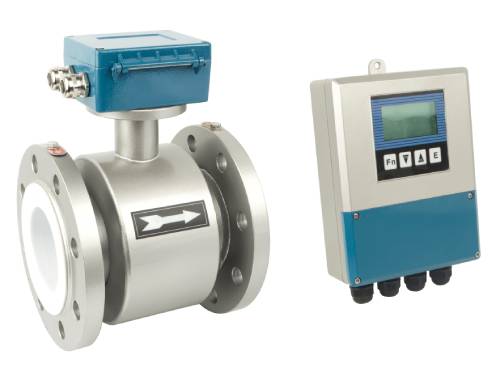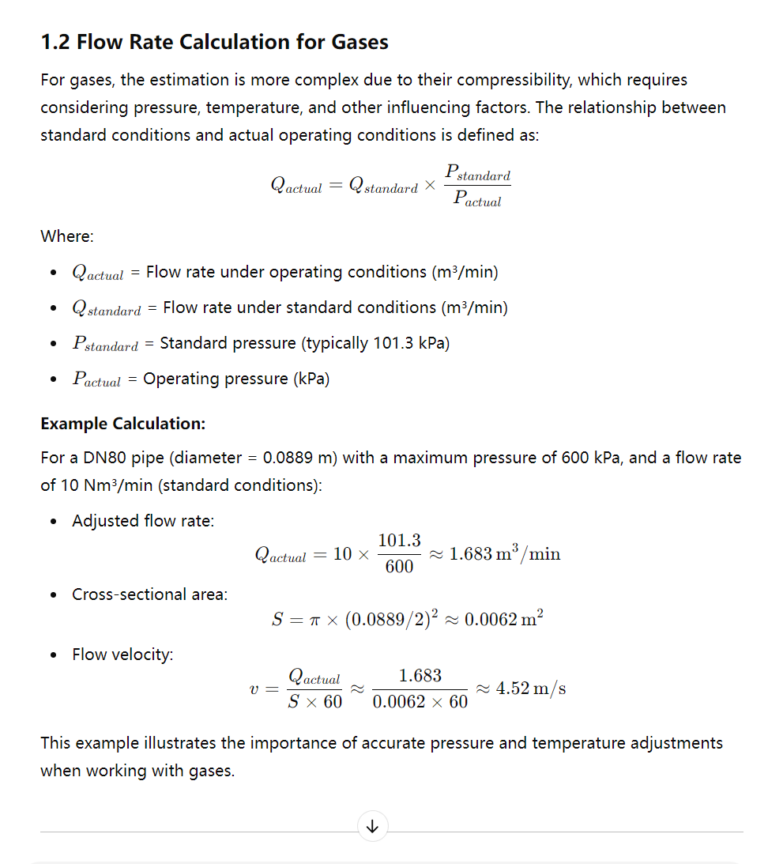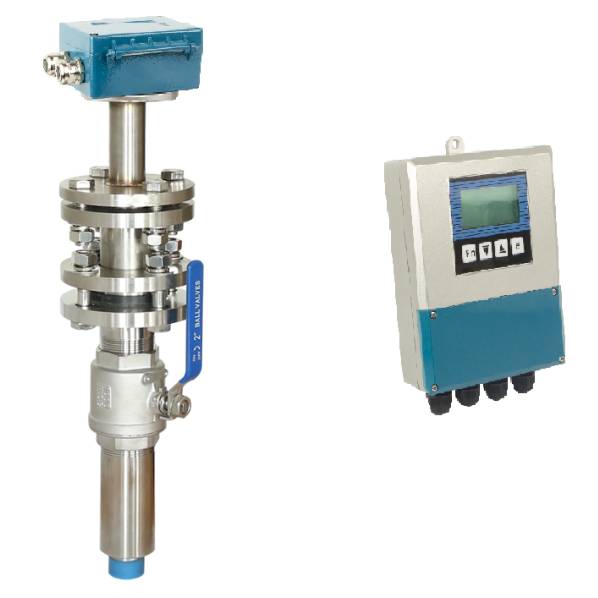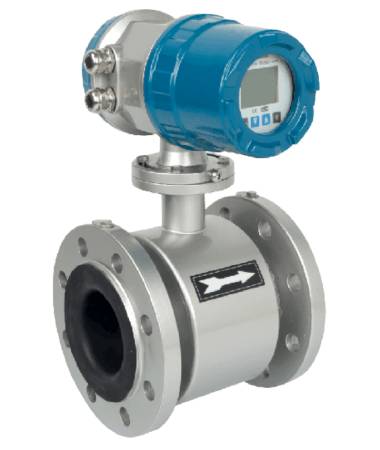Choosing the correct flow meter range is critical for ensuring accurate measurement and efficient operation in fluid systems. When the pipe diameter is known, the flow meter range should account for the maximum and minimum flow rates expected in the system. This article provides a step-by-step guide on determining the appropriate flow meter range for both liquids and gases, along with practical examples.
1. Understanding the Basics
1.1 Flow Rate Calculation for Liquids
For liquids, flow rate is typically estimated using the pipe’s cross-sectional area and the flow velocity. The economic flow velocity for liquids is generally between 1 m/s and 3 m/s. The cross-sectional area of the pipe can be calculated using the formula for the area of a circle:

S=π×(2/d)2
Where:
- S = Cross-sectional area (m²)
- d = Pipe diameter (m)
The volumetric flow rate (QQQ) can then be estimated as:
Q=S×v
Where:
- Q = Flow rate (m³/s)
- v = Flow velocity (m/s)
Example Calculation:
For a pipe with a diameter of 100 mm (0.1 m) and a flow velocity of 2 m/s:
- S=π×(0.1/2)2≈0.00785 m2
- Q=0.00785 m2×2 m/s=0.0157 m3
To convert to a more common unit, such as m³/h:
Q=0.0157×3600=56.52 m3/h
The flow meter range should ideally cover 10–20% below the minimum expected flow rate and up to the maximum flow rate.



2. Practical Considerations for Selecting Flow Meters
Range and Accuracy: The flow meter’s range should exceed the maximum calculated flow rate, with some margin for safety. For instance, if the calculated maximum flow is 81.4 m³/h, consider a flow meter with a range of 100 m³/h.
Future Capacity: Account for potential increases in flow due to future process changes or expansions.
Flow Rate Variability: For processes with highly variable flow rates, select a flow meter that performs well across a wide range.
Fluid Properties:
- Liquids: Consider density and viscosity, as these may affect flow characteristics.
- Gases: Pressure and temperature fluctuations must be incorporated into the design.

3. Common Mistakes to Avoid
- Underestimating Flow Variability: Using a flow meter with insufficient range can lead to inaccurate readings and system inefficiency.
- Ignoring Fluid Properties: Neglecting the impact of temperature, pressure, or viscosity can lead to poor meter selection.
- Improper Sizing: Oversizing or undersizing the meter can increase costs or reduce measurement accuracy.

4. Conclusion
Selecting the right flow meter range involves careful calculations, understanding fluid dynamics, and considering the specific needs of your process. By following the steps and principles outlined in this guide, you can ensure accurate and reliable flow measurement.
